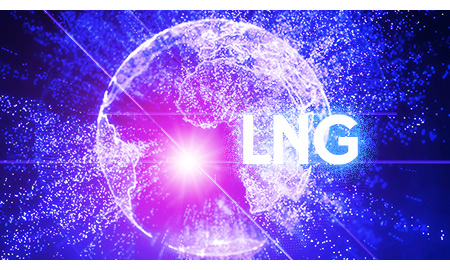
Januari, 21th 2014
-
As the energy industry gears up for another busy year, many challenges will have to be addressed, specifically in the natural gas arena, according to a study, “Challenging Climates: The outlook for the oil and gas industry in 2014”, completed by DNV GL.
"The findings from this year's research reaffirm the oil and gas sector's focus on finding innovative approaches to meet tomorrow's energy demands," commented Elisabeth Torstad, CEO of DNV GL – Oil & Gas, in the report. "Industry leaders have their sights firmly fixed on developing the deep technical ability and smarter ways of working that are needed to access hydrocarbon reserves in new frontiers that were considered inaccessible just a few years ago."
While the industry's overall outlook remains exceedingly strong, the rising importance of natural gas will demand greater focus, the report stated, with recent years witnessing substantial investment in global gas infrastructure, from new pipelines to liquefied natural gas (LNG) facilities.
Last year proved to be a busy year in infrastructure - more than 116,000 miles of pipeline were under development with most of the construction taking place in the United States (over 41,000 miles) and Asia Pacific (over 33,000 miles), according to the report. And this investment doesn't seem to decrease any time soon but will be met with caution.
"Our research suggests that senior oil and gas professionals see capital expenditure becoming more targeted in its deployment in 2014. While nine in 10 respondents to the research are confident about the sector, concerns over rising operational costs, a shortage of skilled professionals and competition from international rivals are causing professionals to focus spending on the projects that will provide the greatest return on investment," stated Cathrine Thorp, vice president and communications director of Oil & Gas at DNV GL.
While the drive and desire to reduce dependency on coal will help boost gas demand, the investment case for gas-related projects is more compelling, especially in Asia and Europe where gas prices remain high. Asian spot LNG cargoes, towards year-end 2013, were trading near $16-17 MMBtu, according to the report, compared with $11 MMbtu in Europe and $3.5 MMBtu in North America.
"More than 40 percent of oil and gas professionals surveyed believe that uneconomic gas prices will subdue gas-related investments during the year ahead," Torp stated, "while just 15 percent felt otherwise."
The International Energy Agency (IEA) also warned of many uncertainties about medium-term trends in the global LNG market. In the agency's 2013 medium-term market report, IEA stated that global growth in natural gas use slowed in 2012, although it still exceeded that of oil and total energy use. All the while, Asian demand for gas remains "red-hot and gas is beginning to gain traction as a transport fuel," IEA stated.
However, stronger gas infrastructure will globalize pricing but not in 2014, DNV GL reports. Survey respondents noted that a range of pipeline projects will help to smooth out price differences, such as new links between Turkmenistan and China, or a plan to develop a West Africa gas pipeline connecting Nigeria, Ghana, Togo and Benin, among other plans.
For some countries, this trend is requiring a change in focus. Canada will have to look at new export avenues as its main customer becomes more self-reliant.
Canada “will need to develop infrastructure, such as LNG export facilities, to reach new export markets," said DNV GL's Arthur Stoddart in the report.
Furthermore, the globalization process will take time.
"Convergence is likely in the medium to long-term, particularly with Asian buyers looking to replace the traditional models that are tied to oil indexation, which will become less viable give the abundance of supply sources," remarked Martin Layfield, global gas segment director, DNV GL.
For now, U.S. LNG shipping exports is expected to help narrow global gas price differentials, as well as political changes. India, a significant potential buyer of LNG, has domestic regulations limiting demand, as the industry remains highly regulated. The Middle East will also play a role with subsidy regimes capping domestic natural gas prices at below $2 MMBtu.
While many uncertainties in this market continues, finding innovative cost solutions to maintain margins and narrowing the focus of spending will quell reservations, noted the report.
"Against a background of rising expenditure amid low production growth, it should come as no surprise that companies will be focusing their efforts on targeting their capital expenditure far more effectively," Eirik Waerness, chief economist at Statoil, said in the report.
Sumber : www.Rigzone.com





